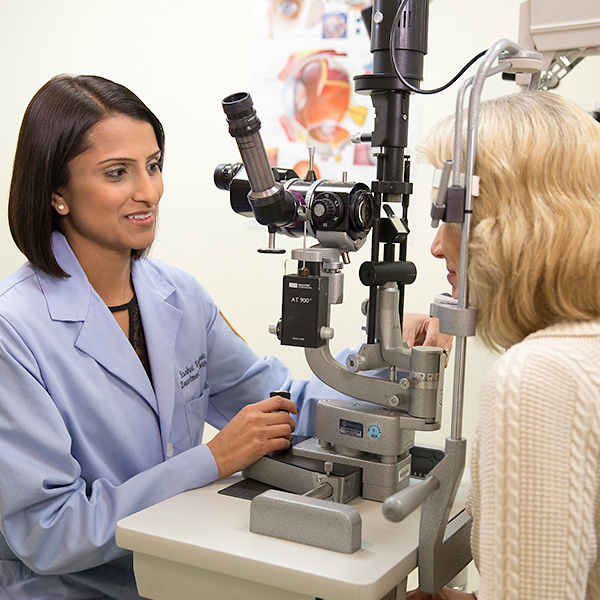Diabetic Macular Edema
Overview and Facts about Diabetic Macular Edema
Diabetic macular edema (DME) is an ophthalmological condition that affects your eyesight and is a complication of a condition called diabetic retinopathy.
Individuals with diabetes are often at risk of developing diabetic retinopathy, which can occur when your blood sugar levels are poorly controlled.
Over time, diabetic retinopathy damages the blood vessels in your eyes. The blood vessels may swell or leak, causing fluid and pressure to build up in the eye. DME develops when fluid seeps into the part of the retina known as the macula.
The retina is the part of your eye responsible for focusing your vision. When the retina swells, your vision may become blurry or distorted.
DME affects up to 10 percent of people with diabetes. The condition is particularly common among individuals with Type 1 diabetes.
Signs and Symptoms of Diabetic Macular Edema
Individuals with DME may experience any of the following symptoms:
- Blurry vision
- Double vision
- Shadowy specks or “floaters” in your vision
- Difficulty perceiving colors
If you have diabetes, you may notice that your vision worsens over time. Your vision may seem darker, blurrier, or less sharp. You may also notice that colors seem faded or washed-out.
However, DME does not always cause symptoms. Regular eye exams can help diagnose the condition in its early stages.
Causes and Risk Factors of Diabetic Macular Edema
DME occurs when your blood sugar levels are not well controlled. Diabetics may be at risk of developing DME if they also have any of the following conditions:
- High blood sugar levels
- High blood pressure
- High cholesterol
- Kidney disease
- Fluid retention
Diabetics are more likely to develop complications over time. Individuals who have been diabetic for many years have an elevated risk of developing DME.
Tests and Diagnosis of Diabetic Macular Edema
As part of some routine eye exams, your doctor dilates your eyes. This procedure allows the doctor to examine the blood vessels at the back of your retina. If you have DME, your doctor might be able to diagnose the condition during this part of the exam.
In some cases, your doctor might recommend a fluorescein angiography procedure. During this test, your doctor takes pictures of the blood vessels in your eye as the dye passes through that area. This test can help reveal leaking blood vessels or backed-up fluid in the eye.
Your doctor may recommend an optical coherence tomography (OCT) exam. An OCT exam helps your ophthalmologist see each of your retina’s layers to determine the thickness of your retina, which will reveal whether fluid has leaked into retinal tissue.
During an OCT exam, your ophthalmologist will administer eye drops to dilate your pupils. You will sit in front of an OCT machine and the equipment scans your eye with infrared light for 5-10 minutes without touching it.
Treatment and Care for Diabetic Macular Edema
If you have DME, your doctor may recommend treatment to help shrink or destroy any leaking blood vessels. Laser therapy or medications that include anti-vascular endothelial growth factor (anti-VEGF) medications or steroids can help. These treatments stop blood vessels in the eye from leaking fluid into the retina.
While there is no cure for diabetes, proper treatment can help bring blood sugar levels under control. If your diabetes is well-controlled, you are less likely to develop diabetic complications like DME. Maintaining a healthy lifestyle can also reduce your risk of developing vision problems.

